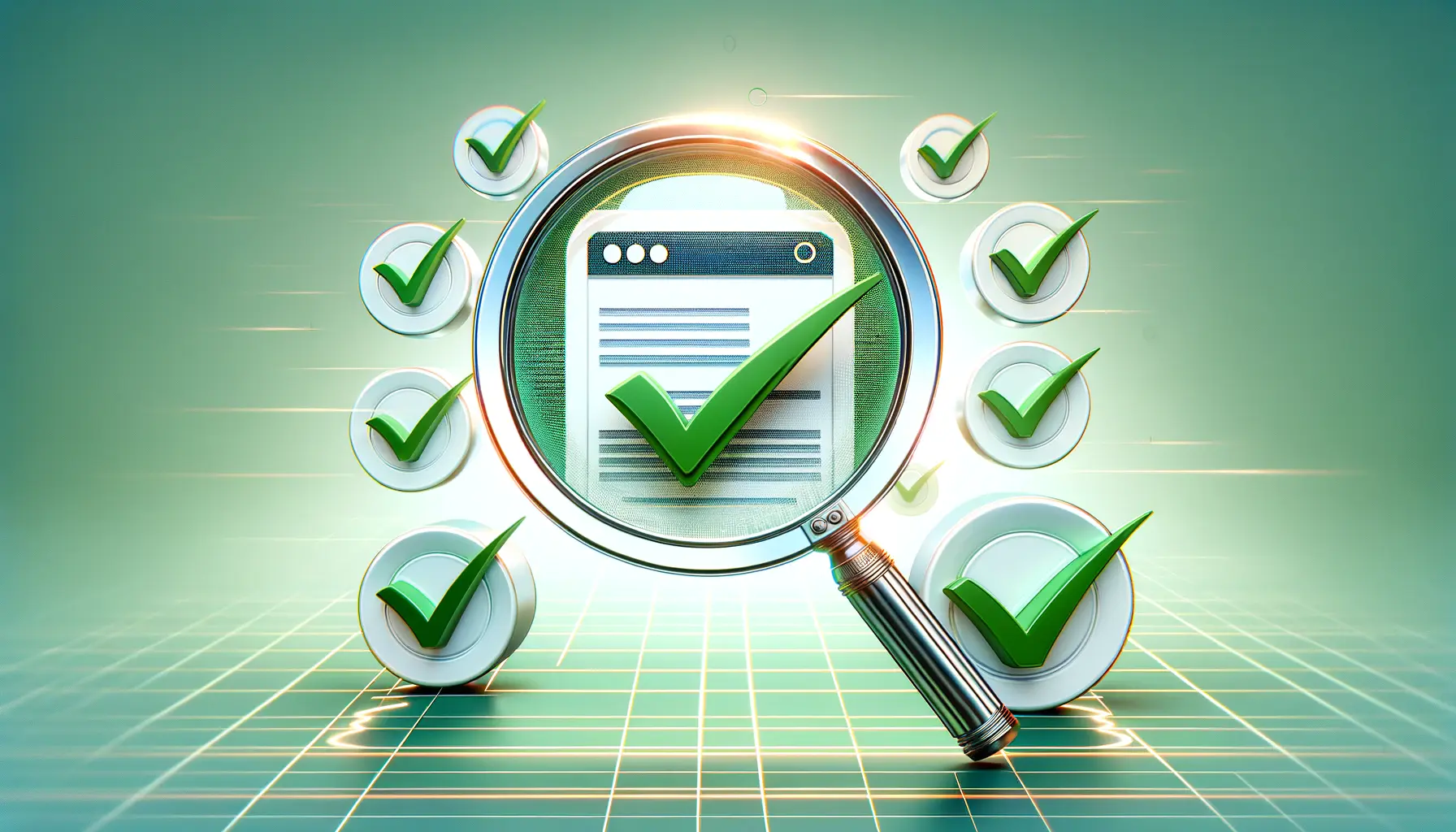Understanding the intricacies of HTML SEO is crucial for anyone looking to enhance their website’s visibility and performance in search engine results pages (SERPs).
At its core, HTML SEO involves optimizing the various HTML elements of a webpage to make it more attractive to search engines like Google.
This process not only helps in improving a site’s ranking but also plays a significant role in providing a better user experience.
By meticulously crafting and structuring HTML tags, webmasters can signal to search engines the relevance and context of their content, thereby increasing their chances of ranking higher for targeted keywords.
The landscape of SEO is ever-evolving, with search engines constantly updating their algorithms to provide users with more relevant and high-quality search results.
In this dynamic environment, understanding the role of HTML in SEO is more important than ever.
From title tags to meta descriptions and header tags, each element plays a pivotal role in a webpage’s SEO strategy.
By optimizing these elements, websites can improve their search engine visibility, drive more organic traffic, and ultimately achieve their digital marketing goals.
- Understanding the Role of HTML in SEO
- Optimizing Title Tags for Maximum SEO Impact
- Mastering Meta Descriptions for Enhanced Visibility
- Leveraging Header Tags for Structured Content
- Image Optimization with Alt Attributes
- Enhancing SEO with Nofollow Links
- Canonical Tags and SEO: Avoiding Duplicate Content Issues
- Unlocking the Full Potential of HTML SEO
- HTML SEO Optimization FAQs
Understanding the Role of HTML in SEO
HTML, or HyperText Markup Language, is the backbone of any website, defining its structure and content.
Search engines crawl and interpret HTML code to understand the context and relevance of a webpage.
This makes HTML optimization a fundamental aspect of SEO.
By using specific tags and attributes, webmasters can highlight the most important parts of their content, making it easier for search engines to index and rank their pages.
Moreover, well-structured HTML code contributes to a better user experience.
Websites that are easy to navigate and understand not only rank higher in search results but also keep visitors engaged for longer periods.
This dual benefit of HTML SEO—improving both search engine visibility and user experience—underscores its importance in a comprehensive digital marketing strategy.
Key HTML Tags for SEO
Several HTML tags are critical for SEO, each serving a specific purpose in the overall optimization process.
Title tags, for instance, define the title of a webpage and are one of the first elements search engines consider when determining a page’s relevance to a search query.
Similarly, meta descriptions provide a brief summary of a page’s content, influencing both click-through rates and search engine rankings.
Header tags (H1, H2, H3, etc.) structure content into hierarchical sections, making it more digestible for both users and search engines.
Alt attributes for images describe the content of images, aiding in image search optimization and accessibility.
These are just a few examples of how HTML tags can be leveraged for SEO, highlighting the necessity of a well-thought-out HTML SEO strategy.
Optimizing HTML elements is crucial for enhancing a website’s search engine visibility and user experience.
Optimizing Title Tags for Maximum SEO Impact
Title tags hold paramount importance in HTML SEO, serving as a primary signal to search engines about the content of a page.
A well-optimized title tag can significantly boost a webpage’s visibility in search results, making it crucial for webmasters to pay close attention to this element.
The art of crafting effective title tags involves balancing keyword inclusion with readability to ensure both search engines and users can grasp the essence of the webpage quickly.
Moreover, title tags are often the first impression users have of your webpage in the SERPs.
An engaging and relevant title tag can increase the likelihood of users clicking through to your site, thereby improving your site’s click-through rate (CTR), a factor that search engines may consider when ranking pages.
Best Practices for Title Tag Optimization
- Be Concise and Descriptive: Keep your title tags under 60 characters to ensure they display fully in search results. A concise yet descriptive title can effectively communicate the topic of the page to both users and search engines.
- Include Target Keywords: Place your most important keywords towards the beginning of the title tag to emphasize their importance. However, avoid keyword stuffing, as it can negatively impact user experience and search engine perception.
- Reflect the Page Content: Ensure your title tag accurately represents the content of the page. Misleading titles can lead to high bounce rates, which may harm your site’s SEO performance.
- Brand Integration: Consider including your brand name in the title tag, especially for homepages or main landing pages. This can enhance brand recognition and trust among users.
- Unique Titles for Each Page: Every page on your website should have a unique title tag to prevent confusion among search engines and users. Duplicate titles can dilute your SEO efforts and lead to indexing issues.
Crafting effective title tags is a critical step in HTML SEO, directly influencing a webpage’s search engine ranking and user engagement.
Mastering Meta Descriptions for Enhanced Visibility
Meta descriptions, while not a direct ranking factor, play a crucial role in attracting clicks from search engine results pages.
These brief summaries provide search engines and users with a snapshot of what to expect on a webpage.
An engaging and well-crafted meta description can be the deciding factor between a user clicking on your page or a competitor’s.
Despite their indirect impact on rankings, meta descriptions significantly influence user engagement metrics, such as click-through rates (CTR), which search engines may consider when determining the quality and relevance of a page.
Crafting meta descriptions that accurately reflect the content of the page while enticing users to click is an art that can dramatically improve a website’s online visibility.
Effective Strategies for Meta Description Optimization
- Clarity and Relevance: Ensure your meta description clearly explains what the page is about and how it benefits the reader. Use action-oriented language to encourage clicks.
- Use of Target Keywords: While meta descriptions do not directly contribute to rankings, including target keywords can make the snippet more relevant to search queries, potentially increasing CTR.
- Optimal Length: Keep meta descriptions between 150-160 characters to ensure they are fully displayed in SERPs without being cut off.
- Unique Descriptions for Each Page: Avoid duplicate meta descriptions across your site. Unique descriptions for each page help differentiate them in search results, improving the user experience.
- Call to Action: Incorporate a compelling call to action (CTA) to motivate users to click through to your site. Phrases like “Learn more,” “Get started,” or “Discover” can be effective.
Optimizing meta descriptions is a key tactic in HTML SEO that, while not directly influencing rankings, can significantly impact a website’s click-through rates and overall search visibility.
Leveraging Header Tags for Structured Content
Header tags, from H1 to H6, serve as a structural hierarchy for content on a webpage, not only making it more readable and enjoyable for users but also providing search engines with key insights into the main topics and subtopics covered.
Proper use of header tags can significantly enhance a webpage’s SEO by ensuring that content is well-organized and easily digestible both for search engines and visitors.
This structured approach to presenting content helps search engines understand the relative importance of various sections, improving the page’s indexing and ranking for relevant queries.
Moreover, header tags contribute to the accessibility of web content, making it easier for users with screen readers to navigate through a page.
This emphasis on user experience is a critical component of modern SEO strategies, as search engines increasingly prioritize pages that offer value and ease of use to visitors.
Guidelines for Optimizing Header Tags
- Clear Hierarchy: Use header tags to structure your content logically, starting with an H1 tag for the main title, followed by H2 tags for main sections, and H3 tags for subsections. This hierarchy guides users and search engines through your content.
- Keyword Inclusion: Incorporate relevant keywords into your header tags, especially the H1 and H2 tags, to highlight the main topics of your content. This practice helps search engines understand the focus of your page.
- Conciseness and Relevance: Keep your headers concise and directly related to the content that follows. Each header should give a clear idea of what the subsequent section is about.
- Unique Headers: Avoid duplicating header text across your site. Unique headers for each page and section can help differentiate your content in the eyes of search engines and users.
- Avoid Overuse: While headers are beneficial for structuring content, overusing them can lead to clutter and confusion. Use header tags where they naturally contribute to the organization and understanding of your content.
Effective use of header tags is essential for creating structured, accessible, and SEO-friendly content that appeals to both search engines and users.
Image Optimization with Alt Attributes
Images enrich web content, making it more engaging and informative for users.
However, for search engines to understand and index images properly, they rely on alt attributes, also known as alt tags.
These descriptive texts provide context to images, aiding in image SEO and making content accessible to users with visual impairments.
Optimizing images with relevant alt attributes can significantly enhance a webpage’s visibility in image search results, driving additional traffic and improving overall SEO performance.
Furthermore, alt attributes play a crucial role in web accessibility, enabling screen readers to describe images to visually impaired users.
This focus on inclusivity not only broadens your audience but also aligns with search engines’ increasing emphasis on user experience as a ranking factor.
By optimizing your images with descriptive, keyword-rich alt attributes, you contribute to a more accessible and SEO-friendly web environment.
Best Practices for Alt Attribute Optimization
- Descriptive and Concise: Write alt attributes that accurately describe the content and context of the image. Keep them brief yet informative to effectively convey the image’s relevance to the surrounding content.
- Include Keywords: Incorporate relevant keywords into alt attributes to improve image search visibility. However, avoid keyword stuffing, as it can detract from the user experience and potentially harm your SEO.
- Avoid Redundant Phrases: Skip phrases like “image of” or “picture of” in alt attributes. Screen readers typically announce images as such, so these prefixes are unnecessary and can be repetitive for users.
- Use for All Images: Ensure every image on your site has an alt attribute. This not only boosts SEO but also ensures your content is fully accessible to all users, including those using screen readers.
- Handle Decorative Images: For images that serve purely decorative purposes and don’t add informational value, use an empty alt attribute (alt=””). This approach signals to screen readers to skip the image, streamlining the browsing experience for visually impaired users.
Optimizing images with descriptive alt attributes is a key strategy for enhancing both SEO and web accessibility, making your content more discoverable and inclusive.
Enhancing SEO with Nofollow Links
Nofollow links are a crucial aspect of a website’s outbound link strategy, instructing search engines not to pass link equity or PageRank to the linked page.
Originally designed to combat spam and untrusted content, the nofollow attribute has evolved into a strategic tool for SEO professionals.
By selectively using nofollow on certain outbound links, webmasters can manage the flow of link equity, preserve the integrity of their site, and comply with search engine guidelines.
Moreover, the nofollow attribute is instrumental in shaping a site’s link profile.
When used judiciously, it can signal to search engines that a webmaster is making deliberate, thoughtful decisions about which external sites to endorse.
This careful curation of outbound links can contribute to a website’s reputation and trustworthiness in the eyes of search engines, potentially impacting its overall SEO performance.
Strategic Use of Nofollow Links for SEO
- Identifying Untrusted Content: Apply the nofollow attribute to links leading to unverified or low-quality content. This practice protects your site’s credibility and ensures you’re not inadvertently endorsing questionable material.
- Managing Paid Links: Use nofollow on paid links or advertisements to comply with search engine guidelines. This transparency helps maintain the integrity of your site’s link profile and avoids potential penalties.
- Controlling Link Equity: Employ nofollow to manage the distribution of link equity, especially in cases where linking to an external site does not necessarily imply an endorsement or relevance to your site’s content.
- Comment Sections and User-generated Content: Automatically applying nofollow to links in comment sections or user-generated content can safeguard against spam and maintain the quality of your site’s outbound links.
- Collaborating with Reputable Sites: While nofollow links do not pass link equity, forming relationships with reputable sites and earning nofollow links can still drive traffic and enhance visibility, indirectly benefiting your SEO efforts.
Misusing the nofollow attribute can lead to missed opportunities for building a strong, organic link profile. Strategic application is key to leveraging nofollow links for SEO benefits.
Canonical Tags and SEO: Avoiding Duplicate Content Issues
Canonical tags play a pivotal role in SEO by addressing duplicate content issues that can dilute a website’s search engine performance.
By specifying a canonical URL for similar or identical content pages, webmasters instruct search engines on which version of the content to index and rank.
This clarity not only helps in consolidating link equity to a single URL but also ensures that users are directed to the most relevant and authoritative version of the content.
Duplicate content, whether within the same domain or across different domains, can confuse search engines and lead to a dispersion of search ranking signals.
Canonical tags offer a straightforward solution to this problem, signaling to search engines the preferred URL for content that appears in multiple places.
Proper use of canonical tags is essential for maintaining a clean, efficient site architecture and maximizing SEO effectiveness.
Implementing Canonical Tags Effectively
- Identify Duplicate Content: Audit your website to identify duplicate or highly similar content. Use canonical tags to specify the preferred version of the content, ensuring search engines index and rank the correct page.
- Consistency in Internal Linking: Ensure that internal links point to the canonical version of the content. Consistent internal linking reinforces the canonical tag’s directive and supports a coherent site structure.
- Use on Syndicated Content: When syndicating content to other sites, request the use of a canonical tag pointing back to the original content on your site. This practice helps preserve the original content’s authority and search visibility.
- Handle URL Parameters: For pages with URL parameters that generate duplicate content (e.g., session IDs, tracking codes), use canonical tags to point to the parameter-free URL version.
- Avoid Conflicting Signals: Ensure that canonical tags do not conflict with other SEO signals, such as redirects or noindex tags. Clear, consistent signals are crucial for effective search engine interpretation and content ranking.
Canonical tags are a powerful tool in an SEO professional’s arsenal, effectively addressing duplicate content issues and ensuring that search engines and users are directed to the most authoritative version of a webpage.
Unlocking the Full Potential of HTML SEO
In the digital age, where the competition for online visibility is fierce, mastering HTML SEO has become indispensable for websites aiming to secure top positions in search engine results pages.
The journey through optimizing title tags, meta descriptions, header tags, and more, underscores the multifaceted nature of SEO.
Each element, from the strategic use of nofollow links to the precise application of canonical tags, contributes to a holistic strategy that not only boosts rankings but also enhances user experience.
Key Takeaways for Maximizing SEO Success
- Optimizing title tags and meta descriptions is foundational for attracting clicks and informing search engines about the content’s focus.
- Structured content using header tags improves readability for users and crawlability for search engines, emphasizing the importance of a well-organized webpage.
- Alt attributes in images open avenues for visibility in image searches, making every visual element an opportunity for SEO enhancement.
- The judicious application of nofollow links and canonical tags safeguards a site’s link equity and addresses duplicate content challenges, respectively.
As we navigate the complexities of HTML SEO, it’s clear that attention to detail and a deep understanding of how search engines interpret webpages are crucial.
The strategic incorporation of SEO practices into HTML coding not only signals relevance and authority to search engines but also ensures a seamless and engaging experience for users.
By adhering to best practices and staying informed about evolving search engine algorithms, webmasters and SEO professionals can unlock the full potential of their online content.
Embracing the Future of HTML SEO
The landscape of SEO is continually evolving, with search engines becoming increasingly sophisticated in how they rank content.
As such, the importance of HTML SEO remains undiminished, serving as the foundation upon which successful digital marketing strategies are built.
Looking ahead, the integration of emerging technologies and adherence to SEO best practices will be paramount in navigating the future of online search visibility.
By embracing the complexities and nuances of HTML SEO, websites can not only achieve higher rankings but also deliver exceptional value to their audience, securing their place in the competitive digital ecosystem.
Quality web design is key for a great website! Check out our service page to partner with an expert web design agency.
HTML SEO Optimization FAQs
Delve into the most common queries surrounding HTML SEO optimization to enhance your website’s search engine visibility and performance.
HTML SEO optimization involves refining HTML elements to improve a website’s search engine ranking and user experience.
Title tags signal to search engines the main topic of a webpage, directly influencing its ranking and visibility.
Meta descriptions, while not a ranking factor, significantly affect click-through rates by providing search snippets.
Yes, properly structured header tags help organize content, making it easier for search engines to understand and rank pages.
Alt attributes describe images to search engines, aiding in image search optimization and enhancing web accessibility.
Nofollow links manage link equity and signal to search engines which links should not influence the target’s ranking.
A canonical tag tells search engines which version of duplicate content to index, preventing SEO issues from content repetition.
SEO HTML elements should be reviewed regularly, especially after major content updates or changes in SEO best practices.












